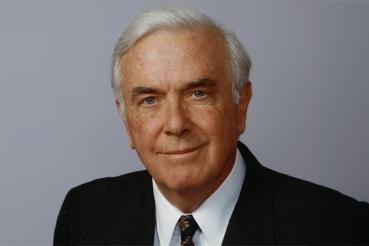Rush University Medical Center cancer surgeons have performed the nation’s first procedure in a clinical trial testing an advanced treatment that uses a form of plasma — energized gas — at near room temperature to help stop the recurrence of cancer after surgery.
Steven Gitelis, MD, director of musculoskeletal oncology at Rush University Cancer Center, used a pen-like electrosurgical device to spray a jet of room temperature plasma — known as cold atmospheric plasma (CAP) — for several minutes at the tissue directly adjacent to where he had just removed a recurrent connective tissue tumor (myxofibrosarcoma) from the chest wall of a woman in her 80s. The procedure was the first time this technology has been used as part of a United States Food and Drug Administration-approved Phase 1 clinical trial.
Many forms of cancer can regrow after a tumor is removed if even a tiny amount of cancer cells remain in the surrounding tissue. Therefore cancer surgeons typically remove a few millimeters of surrounding tissue and then administer additional, or adjuvant, treatments such as chemotherapy and radiation in an attempt to destroy any remaining hidden cancer cells. The chest wall location of this patient’s tumor would have meant removing two ribs, and chemotherapy or radiation could have been risky for someone that age.
“Think of cold plasma energy as molecular level medicine” explained Gitelis. “The energy beam doesn’t blast away cancer cells, but instead triggers the body’s own processes that programs them for death.” Scientists in several countries have shown in laboratory tests that a beam of slightly below room temperature ionized gas — known as cold atmospheric plasma — can cause cancer cells to die without harming surrounding tissue, but this is the first usage as clinical trial.
Plasma’s “collective behavior: flow like a liquid, directed like a beam
Plasma is a state of matter — like solids, liquids and gases — created by subjecting certain gases to electrical energy so that electrons separate from the gas atoms to form a cloud of protons, neutrons and electrons. These separated, and thus highly reactive, atomic particles exhibit what is called “collective behavior:” the ability to act as a whole rather than a collection of atoms. Thus plasma can flow like a liquid and be directed like a beam at tissue containing cancer cells.
Laboratory-produced plasma has been used for a variety of clinical application in the last 20 years, but typically using extremely hot plasma to cauterize tissue or sterilize instruments. But the plasma created for use in the Canady Helios Cold Plasma™ System is considered “cold” because it exists at just below room temperature, allowing surgeons to operate directly next to nerves and arteries without the risk of damaging tissues. The device was developed by biotechnology innovator US Medical Innovations.
CAP helps program cancer to kill themselves
While most cancer therapies are based on killing cancer cells, cold plasma technology relies on a process called apoptosis: or programmed cell death. The human body is constantly renewing itself by replacing old or injured cells with new ones. A complex process has evolved in which proteins in the body recognize which cells need replacing and trigger them to self-destruct. The highly volatile particles in the beam of cold plasma activate this process so the cancer cells are selectively targeted — or programmed — for death.
According to Jerome Canady, MD, US Medical Innovations chief executive officer and a pioneer in cold atmospheric technology, now being able to test in a clinical trial how the laboratory-proven ability of the technology to eliminate residual cancer cells is an exciting milestone in cancer care. “Cold plasma application is the fourth arm for the treatment of cancer, following chemotherapy, radiation and surgery,” he explained. “There simply has never been a ‘magic bullet’ for killing off the residual cancer cells that too often return and prove deadly. “But years of independent lab results and research in several countries has shown how CAP triggers tissue to program those cells for death, and we’re proud and excited to partner with Rush to now deploy that system in a clinical trial.”
Rush cancer surgeons have also been among the first to use cold plasma-powered scalpel developed by Canady and US Medical Innovations that uses similar plasma beams to resect tumors growing in areas that either cannot be reached by traditional scalpels, or are dangerously close to vital organs or arteries that would likely be damaged by a laser-powered scalpel.
Other Rush surgical oncologists are excited by the potential of using CAP to kills residual cancer cells after breast and liver cancer surgeries. As a Phase 1 trial, researchers will first how safe the use of cold plasma is as an adjuvant therapy in a smaller group of patients. Subsequent Phase 2 trials would then test how effectively this procedure kept calls cells from recurring.




